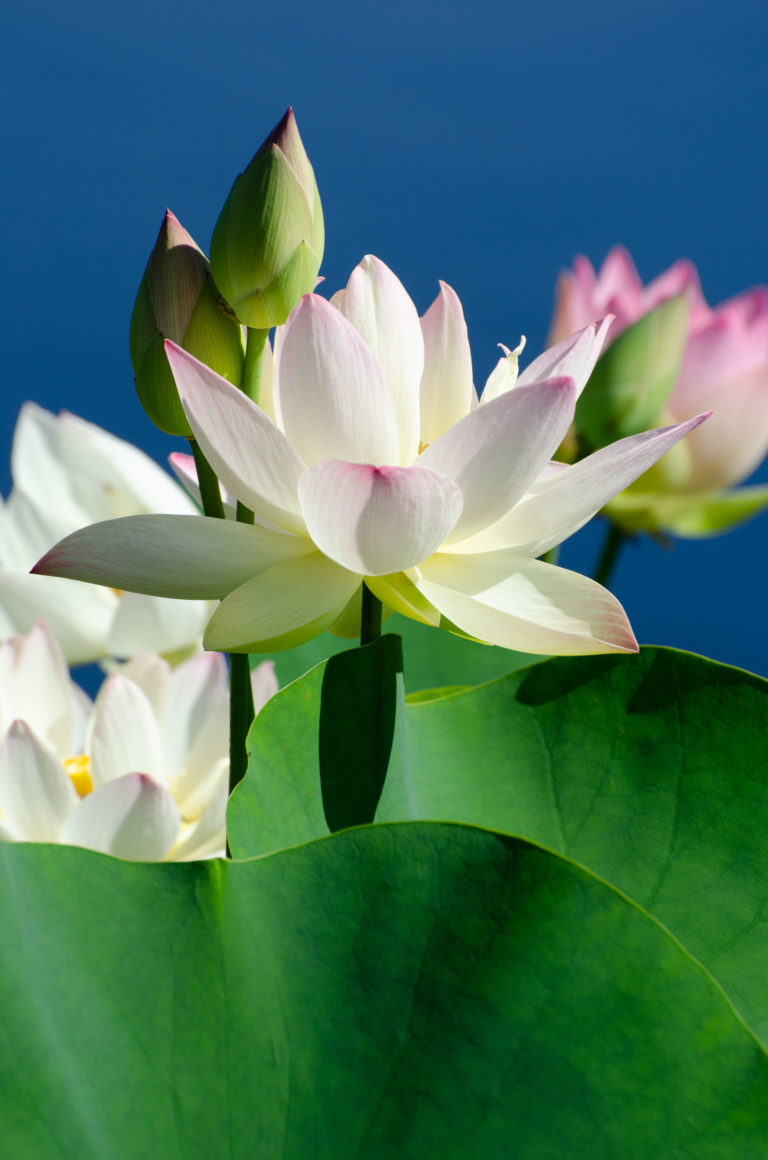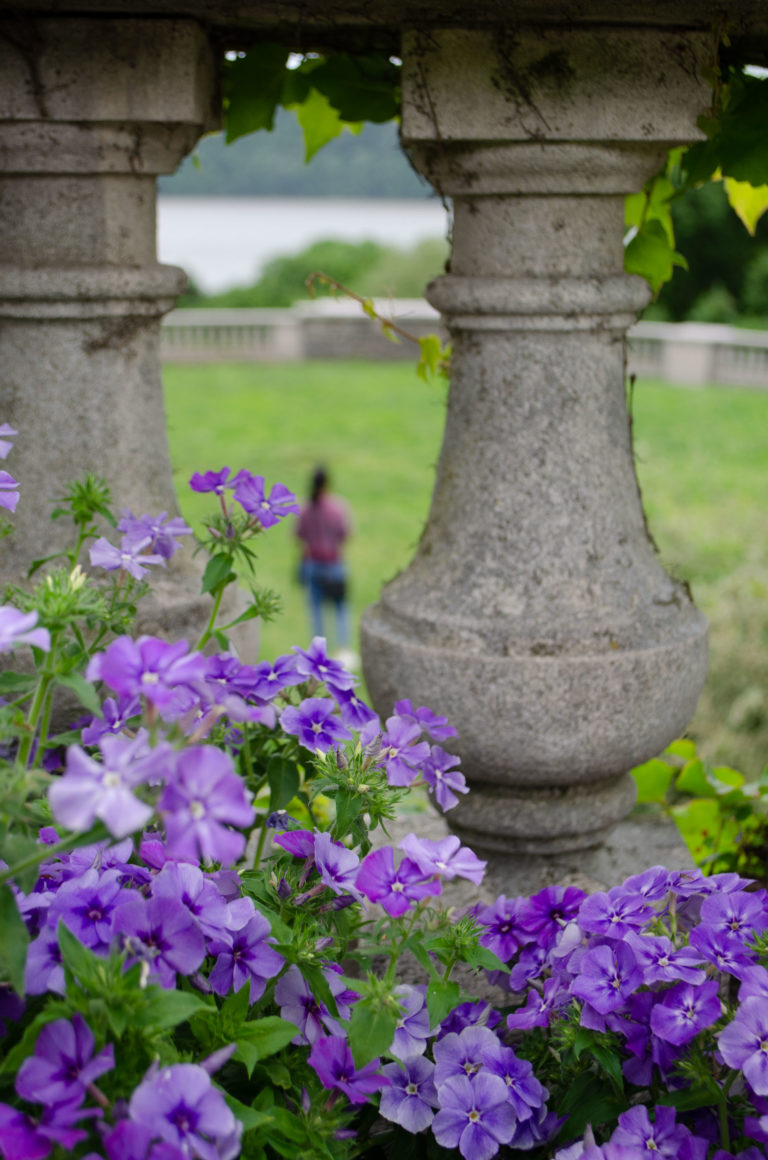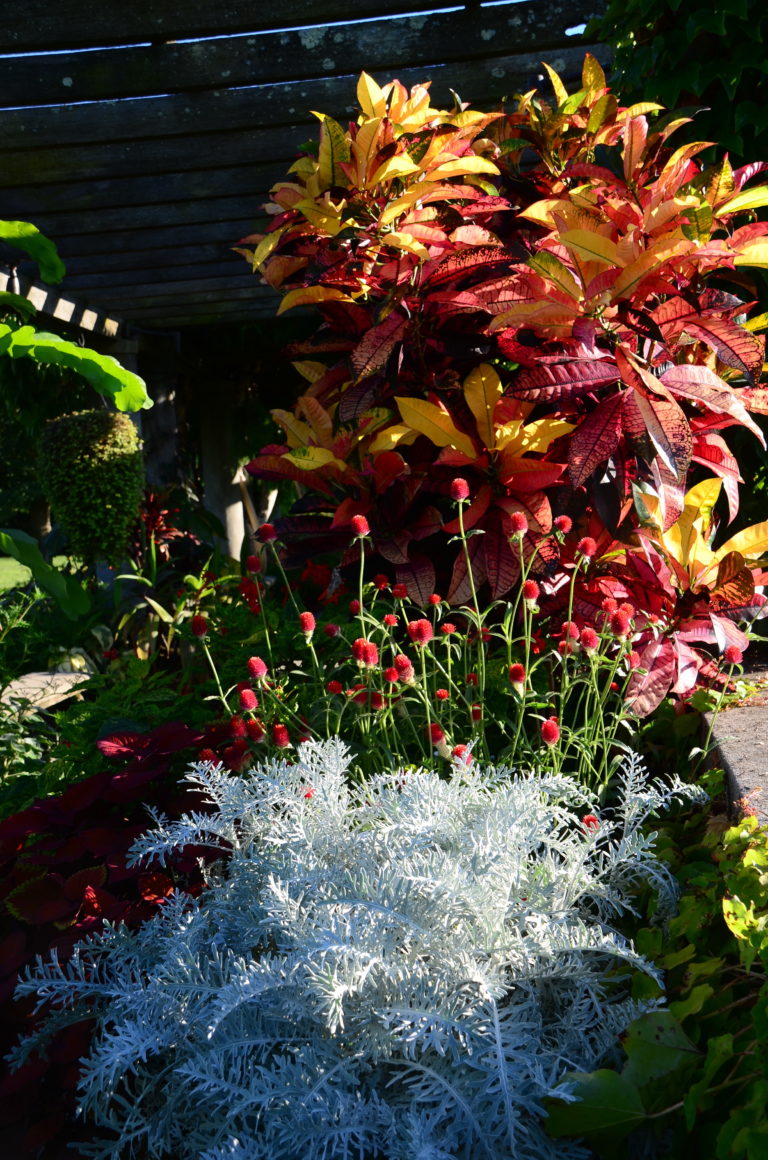
An Edible Paisley Bed with Ornamental Character
August 24, 2022For many years, New York City residents have challenged the shape and size of edible gardens throughout the city. Five-gallon buckets bursting with tomatoes can be spotted on fire escapes, window boxes of herbs perch along railings, and community gardens burst with a bounty of diversity. During the early days of the pandemic, edible gardens became more important to New York City residents and beyond as disrupted food channels triggered shortages. Previously brown thumbs greened up as residents flipped through seed catalogs for dinner ideas. This year, Wave Hill’s Paisley Bed was inspired by these edible gardens. But because this is Wave Hill, plants were selected for their ornamental attributes—attributes like color and form are highlighted as edible plants mingle in concert.


When first installed, the summer Paisley Bed highlighted a bridge-like structure composed of multiple two-tone slats, some with a neon string from tip to ground. Blue on one side and purple on the other, the colored slats seem to shift as they turn to mimic the curvature of the bed, encouraging a full-circle look at this garden. When asked about the purpose of this structure, Paisley Bed designer and Director of Horticulture Cathy Deutsch replied that she “needed a multi-purpose structure. Something colorful to fill the space as plants were developing, and also support the vining plants once they reached maturity.”

This is a diverse design of mostly herbaceous plants, but there are two shrubs—blueberry and jujube—anchoring the initial planting. Planted in early July, seed-grown vegetables, fruits and flowers were still small but had a hopeful future. Long days and summer heat were ahead for these plants, pushing them towards maturity at a record rate. By August, canopy cover was achieved and no soil was visible in the Bed. But it wasn’t without difficulties. Deutsch divulges, “let’s just say we have well-fed rabbits in the garden this year.”

From now until early autumn is prime time for this edible garden, but the display will evolve along with the seasons. Red lettuces, for instance, have produced tall, funky flower spikes and have served their purpose. Deutsch planned on these bolting lettuces: "The colorful lettuces were planted thickly as filler and are steadily getting removed to make way for burgeoning tomatoes, white and green eggplant cultivars and vining cucurbits (melons and squash).” When a plant bolts, it redirects its energy from producing tender foliage to producing flowers and seed. For some plants, this new objective affects their flavor. Lettuce, for example, becomes bitter and produces a milky sap. Many visitors have asked whether the plants in the Paisley Bed will be harvested for food. Deutsch reports that these bitter greens will be fed to chickens owned by staff and friends, but there “will be no waste. The Gardeners will put everything edible to use—fresh salads, cooked squash dishes or refreshing watermelon slices during break. We may even have a vegetable-based potluck meal to conclude the season.”

The blue and purple structure of the bed is barely visible now. Serving its final purpose, it supports watermelon and beans that twine up and across the rope using tendrils. The ascending “paisley arch” offered an origin of structure to this garden, but the composition of plant shape and form is the true highlight of this ornamental edible garden.
The idea behind this year’s design for the Paisley Bed, was “to showcase the ornamental attributes of these edible plants and inspire other gardeners in unexpected ways,” Deutsch explains. “Gardening draws together communities with a mutual love for food—sharing seeds, plants, produce, recipes and perspectives. It is all part of a gardening experience.” As she asks, "What will your edible garden inspire?"
For the full list of plants, click here.

Jess Brey,
Ruth Rea Howell Senior Horticultural Interpreter



